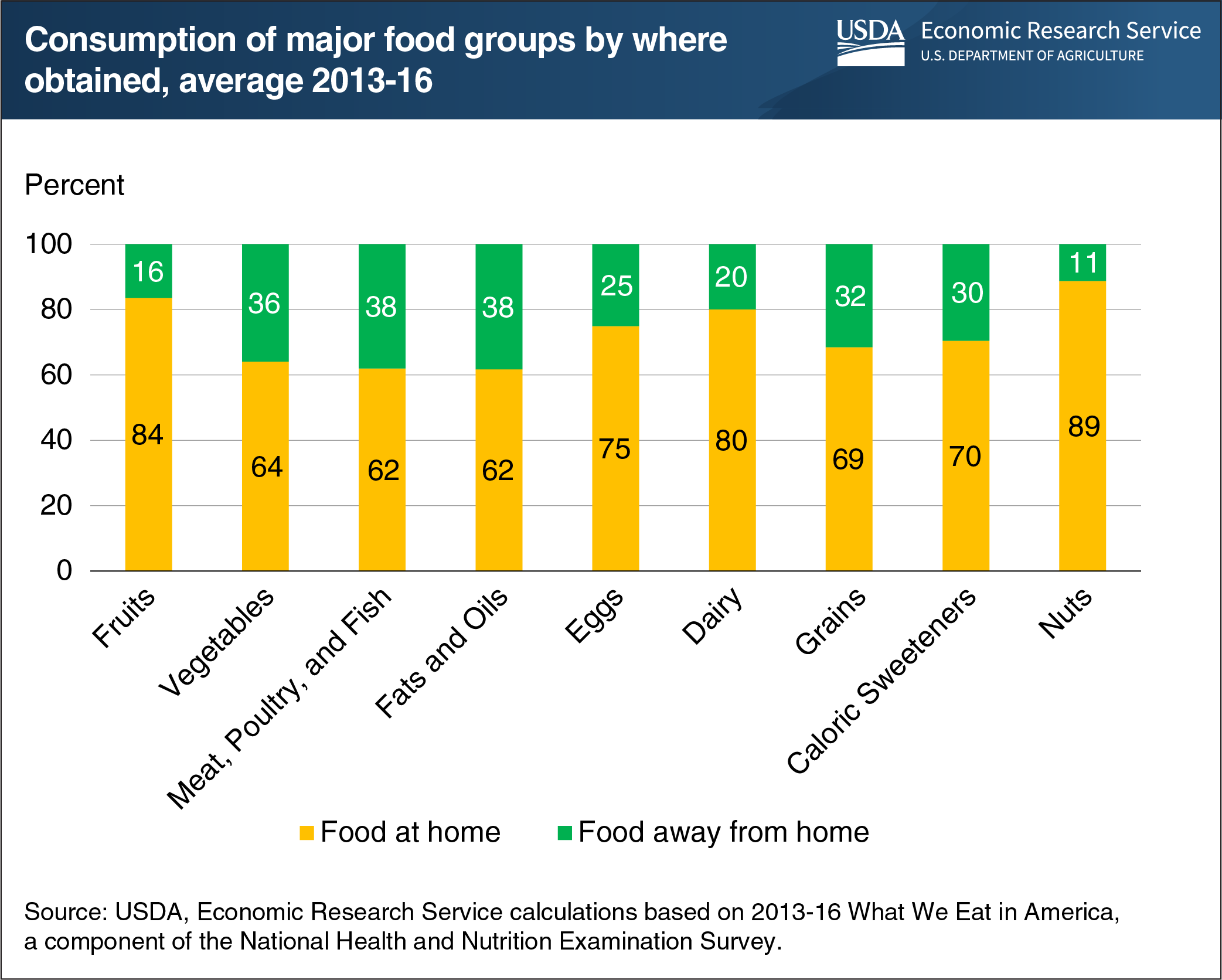Shifts in where food is obtained likely to affect specific commodities
- by Biing-Hwan Lin
- 1/27/2021

As COVID-19 disrupted life at home, work and school in 2020, U.S. consumers shifted where they obtained their food. For many people, grocery store foods replaced meals and snacks previously eaten in restaurants, college dining halls, sports venues, and other eating-out places. To better gauge the potential effect on commodity sectors due to changes in access to commercial eating places, Economic Research Service (ERS) researchers recently studied national survey data on foods eaten and where they were acquired. ERS researchers used recent 2013-16 data from the National Health and Nutrition Examination Survey to estimate the consumption of 63 commodities by two food sources: food at home (foods obtained at grocery stores, supercenters, and other retailers) and food away from home (foods obtained at away-from-home eating places). Their analysis shows that consumers obtained 38 percent of their meat, poultry and fish at restaurants and other eating places away from home during 2013-16. The fats and oils food group showed the same share. On the other end of the data, the share of nuts obtained at eating-out establishments was 11 percent, as most consumers bought that product from stores. For the same period, consumers obtained a larger share of vegetables (36 percent) away from home compared with fruits (16 percent). As people in the United States consume more of their food at home because of the pandemic, consumption of specific commodities may be affected differently. This chart appears in the ERS COVID-19 Working Paper, Shares of Commodity Consumption at Home, Restaurants, Fast Food Places, Schools, and Other Away from Home Places: 2013-16, released December 2020.

